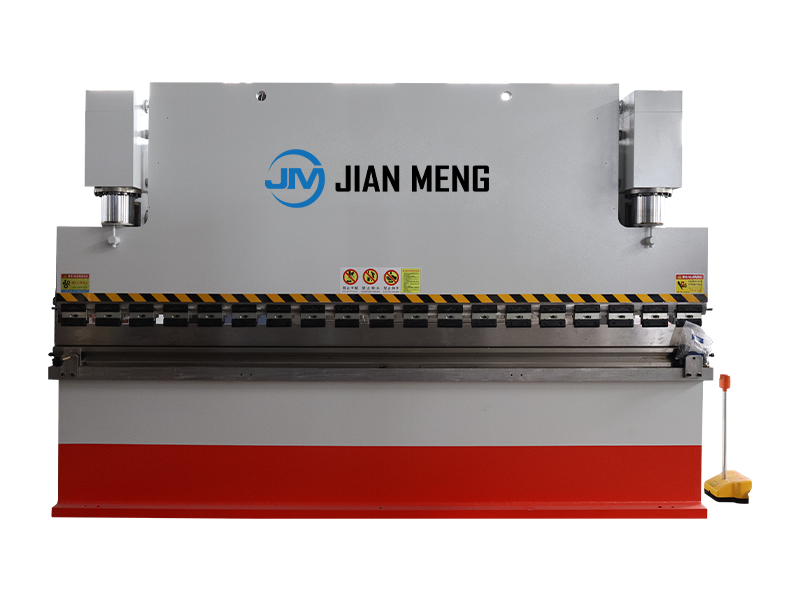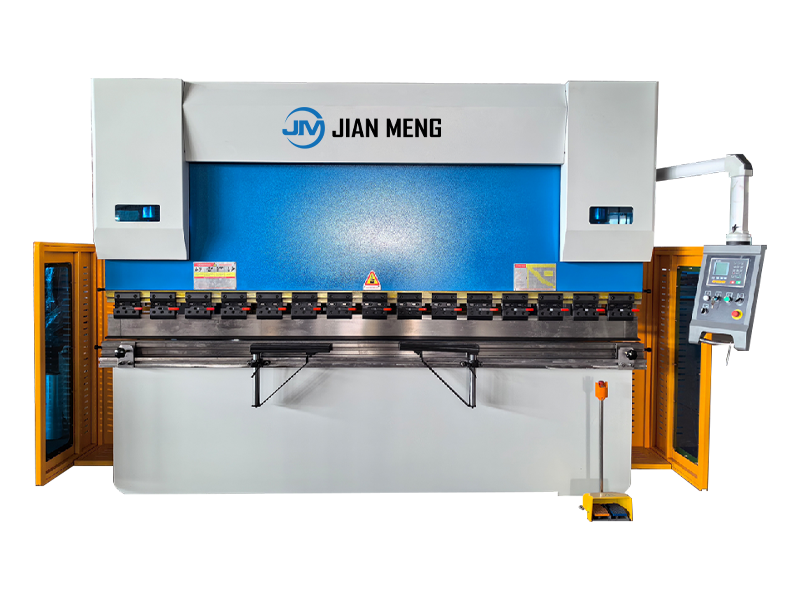A shrinker stretcher is an indispensable precision tool in sheet metal fabrication, enabling the creation of accurate curves, compound angles, and complex contours with controlled metal deformation. It is a cornerstone tool for both hobbyists (e.g., custom metal artisans) and professionals in fields requiring precise metal shaping, such as automotive restoration, aerospace component manufacturing, and industrial metalwork.
Whether restoring a vintage car’s body panels, fabricating custom HVAC ductwork, or shaping aircraft interior components, a shrinker stretcher eliminates the need for cumbersome welding or multi-piece assembly by directly manipulating metal’s form. Its ability to induce localized plastic deformation (compression for shrinking, tension for stretching) makes it ideal for intricate designs that demand consistency— a trait valued across automotive, aerospace, and heavy machinery industries.
Mastering a shrinker stretcher requires an understanding of metal properties, tool mechanics, and safe operating protocols. Below is a comprehensive guide to its functionality, applications, and step-by-step operation, designed to enhance precision and efficiency in sheet metal projects.
A shrinker stretcher is a specialized sheet metal tool engineered for controlled plastic deformation of flat or slightly curved metal sheets. It consists of two sets of opposing, serrated jaws (one for shrinking, one for stretching) mounted on a rigid frame, which may be manual (lever-operated) or pneumatic (air-powered) for high-volume tasks. This tool is a staple in professional metal shops due to its ability to shape metal without compromising structural integrity.
- Shrinking Jaw: Features a concave, serrated design that grips the metal and compresses its fibers when pressure is applied, causing the material to curve inward (e.g., forming the radius of a wheel arch).
- Stretching Jaw: Utilizes a convex, serrated design that pulls and expands metal fibers, resulting in outward curvature (e.g., shaping the crown of a car hood).
The tool is compatible with most common sheet metals, including low-carbon steel (18–22 gauge), aluminum (16–20 gauge), and copper (14–18 gauge). Key applications include:
- Automotive: Shaping fenders, door skins, and trunk lids; repairing dents in classic car bodies.
- Aerospace: Fabricating lightweight, aerodynamic components (e.g., nacelle trim, cockpit panels).
- Industrial: Forming custom enclosures, machine guards, and architectural metal accents.
How Does a Shrinker Stretcher Work?
The functionality of a shrinker stretcher is rooted in manipulating metal’s crystalline structure to induce permanent, localized deformation—without cracking or tearing the material. Unlike cutting tools, it works by altering the metal’s length or width at specific points, leveraging the material’s ductility.
Core Operational Principles
1. Shrinking Mechanism: When the metal sheet is clamped in the shrinking jaws, applying force to the tool’s lever compresses the jaws together. This squeezes the metal’s fibers, reducing the material’s cross-sectional area at the contact point. As the compressed fibers contract, the surrounding metal bends inward to accommodate the shrinkage, creating a concave curve.
2. Stretching Mechanism: The stretching jaws grip the metal and pull it outward when force is applied. This tension stretches the metal’s fibers, increasing the material’s length at the contact point. The stretched fibers expand, causing the surrounding metal to bend outward, forming a convex curve.
Critical to its operation is the tool’s serrated jaws: they ensure a secure grip on the metal, preventing slippage that could lead to uneven deformation or surface damage. For optimal results, the tool relies on gradual, incremental force—not sudden pressure—to maintain control over the metal’s shape.
Key Benefits and Applications
The shrinker stretcher’s versatility and precision make it a preferred tool in sheet metal fabrication, offering distinct advantages over traditional shaping methods (e.g., hammering, rolling):
Primary Benefits
- Precision: Enables micro-adjustments to curves and angles, ensuring consistency across large or complex parts.
- Efficiency: Eliminates the need for welding multiple pieces or using fillers, reducing project time and material waste.
- Material Preservation: Induces controlled deformation without weakening the metal’s structural integrity (unlike excessive hammering, which can cause work hardening).
- Versatility: Works with multiple metal types and gauges, adapting to diverse projects from small hobby pieces to industrial components.
Industry-Specific Applications
| Industry | Common Uses |
|------------------------|-----------------------------------------------------------------------------|
| Automotive Restoration | Shaping vintage car fenders, repairing rust-damaged body panels, forming custom bumpers. |
| Aerospace | Fabricating aircraft nacelle components, shaping lightweight aluminum interior panels. |
| Custom Metalwork | Creating decorative metal art, forming custom door edges, building motorcycle gas tank contours. |
| HVAC & Industrial | Forming ductwork elbows, shaping machine guard curves, fabricating electrical enclosures. |
Essential Safety Tips and Preparation
Safe operation of a shrinker stretcher is critical to prevent injury (e.g., lacerations, tool slippage) and ensure tool longevity. Adhere to the following protocols before initiating any project:
Mandatory Personal Protective Equipment (PPE)
- Cut-Resistant Gloves: Protect hands from sharp metal edges and serrated jaws (nitrile-coated or leather gloves are recommended for grip).
- Impact-Resistant Safety Glasses: Shield eyes from metal shavings, debris, or accidental tool component failure (ANSI Z87.1-certified glasses are industry-standard).
- Sturdy Footwear: Steel-toed boots prevent injuries from dropped tools or metal sheets.
- Ear Protection (for pneumatic models): Reduces noise exposure from air-powered mechanisms (3M or Howard Leight earplugs/muffs are suitable).
Tool and Workspace Preparation
1. Secure the Tool: Mount the shrinker stretcher to a stable workbench using a heavy-duty vise or dedicated mounting bracket. This prevents lateral movement during operation, which can cause uneven deformation.
2. Inspect the Tool:
- Check jaw alignment: Ensure serrated surfaces are parallel and free of debris (misaligned jaws cause uneven metal shaping).
- Verify lever/spring functionality: For manual tools, confirm the lever moves smoothly; for pneumatic tools, check air hoses for leaks and pressure regulators for accuracy (typically 80–100 PSI).
3. Prepare the Metal:
- Deburr all edges of the sheet metal to avoid lacerations (use a deburring tool or sandpaper).
- For thicker gauges (≥16 gauge steel), anneal the metal (heat to a dull red and allow slow cooling) to increase ductility—this prevents cracking during stretching/shrinking.
4. Organize the Workspace: Clear clutter, secure loose cables/hoses, and ensure adequate lighting to monitor metal deformation closely.
Step-by-Step Guide: Using a Shrinker Stretcher on Sheet Metals
The following steps are tailored for manual shrinker stretchers (the most common type for hobbyists and small shops). For pneumatic models, replace lever operation with regulated air pressure adjustments.
1. Select and Prepare the Sheet Metal
- Choose a metal gauge compatible with your tool (refer to the manufacturer’s specifications—most manual models handle 18–22 gauge steel or 16–20 gauge aluminum).
- Mark the deformation zone on the metal using a soapstone marker or fine-tip permanent marker (avoid sharp tools that scratch the metal’s surface).
- If forming a curve, draw a reference line to ensure consistent shaping.
2. Set Up the Tool
- Mount the shrinker stretcher to the workbench using a vise, ensuring the jaws are at a comfortable working height (elbow-height is ideal for leverage).
- Adjust the jaw gap: Loosen the jaw adjustment screw and set the gap to match the metal’s thickness (the gap should be slightly narrower than the metal gauge to ensure a secure grip). Tighten the screw to lock the setting.
3. Choose the Correct Jaw (Shrink vs. Stretch)
- For inward curves (e.g., wheel arch radius): Use the shrinking jaw (concave serrated design).
- For outward curves (e.g., hood crown): Use the stretching jaw (convex serrated design).
- Confirm the jaw is locked in place (most tools have a toggle or pin to switch between jaws).
4. Position the Metal
- Place the marked deformation zone of the metal between the serrated jaws.
- Align the metal so the reference line is parallel to the jaw edges—this ensures the curve follows your desired path.
- Grip the metal firmly with one hand to prevent slippage; use the other hand to operate the lever.
5. Apply Controlled Force
- Begin with light, incremental pressure on the lever (10–15 lbs of force for thin gauges). Avoid sudden or excessive force, as this can cause "over-shrinking" (wrinkling) or "over-stretching" (thinning/cracking).
- After each lever press, release the pressure and check the metal’s shape—small, repeated adjustments yield better results than large, single presses.
6. Refine and Verify the Shape
- If the curve is uneven, reposition the metal slightly (shift the jaw contact point by 1–2 mm) and apply gentle pressure to correct the contour.
- For compound curves (e.g., a car fender’s 3D shape), alternate between shrinking and stretching jaws at different points—mark each adjustment to track progress.
7. Test and Finalize
- Once the desired shape is achieved, remove the metal and inspect it for consistency (use a contour gauge to compare against a template if needed).
- If minor imperfections exist, make final micro-adjustments with the tool—avoid overworking the metal, as repeated deformation can cause work hardening.
Common Mistakes and How to Avoid Them
Even experienced fabricators encounter challenges with shrinker stretchers. Below are actionable solutions to the most frequent issues:
| Common Mistake | Cause | Solution |
|-------------------------------------------------|-----------------------------------------------------------------------|-------------------------------------------------------------------------|
| Over-shrinking (metal wrinkling) | Excessive force or repeated presses in the same spot. | Use 1–2 light presses per spot; move the metal 1–2 mm between presses. |
| Over-stretching (metal thinning/cracking) | Using the stretching jaw on unannealed thick metal (≥16 gauge steel). | Anneal thick metals first; limit stretching to 2–3 presses per spot. |
| Uneven curves | Misaligned metal or inconsistent jaw pressure. | Use a reference marker; check metal alignment before each press. |
| Jaw slippage (metal shifting during operation) | Jaw gap too wide or serrated jaws dirty. | Clean jaws with a wire brush; adjust the gap to match the metal gauge. |
| Tool instability | Insecure mounting to the workbench. | Use a heavy-duty vise; add a rubber垫 under the tool base for grip. |
Pro Tip: Always practice on scrap metal (of the same gauge and material as your project) before working on the final piece. This allows you to test jaw settings, force levels, and shaping techniques without risking costly materials.
Maintenance and Care for Your Shrinker Stretcher
Proper maintenance ensures your shrinker stretcher retains precision and longevity (a well-maintained tool can last 10+ years). Follow these guidelines:
Routine Maintenance (After Each Use)
1. Clean the Jaws: Use a wire brush or compressed air to remove metal shavings and debris from the serrated surfaces—debris buildup causes slippage and uneven shaping.
2. Lubricate Moving Parts: Apply a few drops of light machine oil (e.g., 3-in-1 Oil or SAE 10W-30) to the lever pivot points, jaw adjustment screws, and spring mechanisms. Avoid heavy grease, as it attracts debris.
Monthly Inspections
1. Check Jaw Wear: Inspect serrated edges for dulling or chipping—replace jaws if they no longer grip metal securely (replacement jaws are available from tool manufacturers).
2. Verify Alignment: Use a straightedge to confirm the jaws are parallel; adjust the jaw alignment screw if gaps are present.
3. Test Spring Tension (manual models): Ensure the lever returns to its original position smoothly—weak springs reduce leverage and control; replace springs if needed.
Long-Term Storage
- Store the tool in a dry, climate-controlled area to prevent rust (apply a thin coat of oil to the jaws if storing for ≥1 month).
- For pneumatic models, disconnect air hoses and drain moisture from the tool’s air chamber to avoid internal corrosion.
Tips for Mastering Metal Shaping and Forming
Becoming proficient with a shrinker stretcher takes practice, but these strategies accelerate skill development:
1. Learn Metal Properties: Understand how different metals respond to deformation—aluminum stretches more easily than steel, while copper requires lower force to shrink. Consult a sheet metal gauge chart to match tool settings to material thickness.
2. Use Templates: Create a cardboard or wood template of your desired shape before working on metal. This provides a reference to check your progress and avoid over-shaping.
3. Master Incremental Shaping: Focus on 1–2 mm adjustments at a time—large, sudden changes are harder to correct than small, controlled ones.
4. Join Community Resources: Participate in forums (e.g., Metal Meet, Garage Journal) or local metalworking workshops—experienced fabricators often share tips for complex shapes (e.g., compound curves).
5. Invest in Quality Tools: A high-quality shrinker stretcher (e.g., brands like Eastwood, Baileigh) has tighter jaw tolerances and more durable components, making precision easier to achieve.


 English
English  中文
中文  Arabic
Arabic  Russian
Russian  Spanish
Spanish  Portuguese
Portuguese  French
French  German
German  Hindi
Hindi  Thai
Thai  Vietnamese
Vietnamese  Khmer
Khmer  Italian
Italian  Turkish
Turkish  Korean
Korean  Belarusian
Belarusian 



